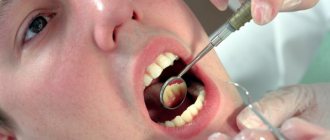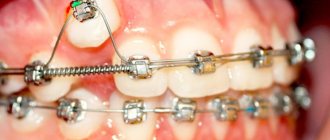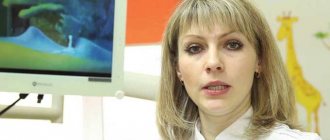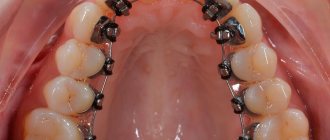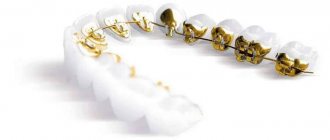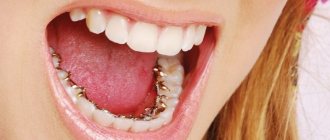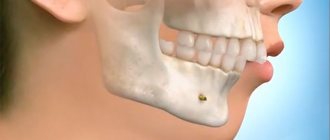Uneven teeth or malocclusion have long ceased to be a problem for modern people. All this can be completely solved with the help of braces. But many do not know that before the procedure there is a process of careful preparation. This includes: professional cleaning, sanitation and other operations.
The presence of any structures on the teeth does not make a person an outcast of society, as it was several decades ago. Now, on the contrary, it is an indicator of caring for one’s own health, regardless of age. After all, straight and beautiful teeth are the pride of their owner.
At what age are braces placed?
Braces are placed on both children and adults. Dentists say that the optimal age for orthodontic treatment with braces is 12-13 years. During this period, the final formation of the bite and the replacement of milk teeth with molars occurs. Pathologies in the structure of the dental system discovered in a teenager are eliminated faster than in adulthood.
In some cases, braces are placed earlier - at 8-11 years. However, if a person has missed this point, he can correct the problem as an adult. Of course, the treatment process will be longer, but no less effective. There is no upper age limit as such: an adult can be prescribed to wear braces as long as he has teeth, and bite correction is justified in terms of indications and contraindications.
What do you need to know about archwires for braces?
The brace system is a rather complex orthodontic structure designed specifically for the correction of malocclusion.
It consists of a number of elements, each of which performs a specific function in the system. One of the most important components is the arches for braces - they are responsible for the correct distribution of the load during treatment and the movement of teeth into the desired position. In this article you will find all the necessary information about the types of arches and their purpose. You will learn why orthodontists change archwires. We will tell you what to do if the arc flies out or breaks, and also if a person accidentally swallows a piece of wire. Let’s not forget to talk about the process of replacing the arch on braces.
Indications and contraindications for installing braces
Braces are placed to eliminate the following dental problems:
- malocclusion;
- uneven development of the jaws;
- anomalies of individual teeth;
- deformation of the dentition;
- chewing dysfunction;
- impacted teeth;
- large interdental spaces.
Contraindications to wearing braces can be absolute or relative. Among the first, which completely exclude the possibility of installing an orthodontic structure, are:
- absence of most of the teeth;
- some oncological pathologies;
- blood diseases;
- diseases of the endocrine system;
- very weak immunity;
- pathologies of the skeletal system;
- tuberculosis and HIV;
- psychiatric disorders.
Relative contraindications are temporary. These include:
- periodontal disease;
- caries;
- wounds in the oral cavity;
- metal implants;
- poor hygiene.
Braces can be placed only if the listed factors are eliminated. Indications and contraindications are identified during diagnosis - the first stage of installing orthodontic brackets.
Contraindications
Unfortunately, not all patients can correct defects in the dental system with braces. There are a number of contraindications for wearing them. If any are present, they will definitely be identified during diagnosis.
To eliminate some negatively influencing factors, it is enough to carry out procedures or a course of treatment before the upcoming installation of braces.
The influencing factors that can be eliminated include the following diseases:
- early stage periodontitis;
- non-advanced periodontal disease;
- caries or its consequences.
A temporary allergic reaction to some materials included in the structure may also occur. This happens with individual intolerance to any substances. The problem is eliminated by replacing the irritant with another, hypoallergenic component.
However, there are diseases in which the installation of braces is strictly prohibited. Among them:
- oncological diseases;
- tuberculosis;
- HIV or AIDS;
- osteoporosis or other bone tissue pathologies;
- disorders of the cardiovascular, endocrine or circulatory system;
- severe forms of periodontal disease and periodontitis;
- mental disorders.
If the patient’s medical history contains an absolute contraindication for the installation of braces, but the dentition or bite requires immediate treatment, a solution can be found. At “People's Dentistry”, the orthodontist considers all possible options and selects the optimal method of correction.
How braces are inserted: stages of orthodontic treatment
The process of installing braces, that is, fixing them on the teeth, lasts about 1.5-2 hours. Preparation takes much more time. In general, treatment includes the following steps:
- Diagnostics: obtaining x-rays, on the basis of which braces will be made.
- Drawing up an individual treatment plan, advising the patient on preparation for the procedure.
- Sanitation of the oral cavity, treatment of diseases of the teeth and gums: caries, inflammatory processes, etc.
- Installation of an orthodontic structure, fixing it on the dentition.
- Assistance in adaptation: doctor’s recommendations regarding nutrition and care of teeth and braces during the treatment period.
Let's look at these stages in more detail.
Tooth extraction
You need to be prepared for the fact that before installing braces you will have to have your wisdom teeth removed. As practice shows, in approximately 90% of cases these teeth have to be removed. For some reason, they are in an incorrect position and, when they erupt, cause pain and discomfort, and also deform nearby teeth.
However, it is possible that it may be necessary to remove more than just wisdom teeth. When premolars grow on top of each other, correcting them with braces may be impossible. The only way to obtain an even dentition is to remove interfering specimens before installing the structure.
How to install braces: diagnosis and treatment plan
Diagnostics allows you to identify contraindications, assess the condition of teeth and gums, take pictures and develop a further treatment plan. After the diagnostic examination, approximately a week passes, during which the doctor analyzes the material and draws up a plan for installing orthodontic structures. There may be several such plans and they differ in the method of fixing the braces or their type. The patient has the right to choose one of the proposed treatment options. Then the next stage begins - preparing the oral cavity for installation of the structure. Its duration is determined by the condition of the teeth and gums.
Can teeth move apart again after treatment?
No. After treatment is completed, a special wire, a retainer, is attached to the inner surface of the teeth. It prevents teeth from moving again. Sometimes a retention guard is additionally made for the upper jaw, which must be worn at night. The duration of the retention (fixing) period is determined by the orthodontist individually.
Did you like the material? Place
